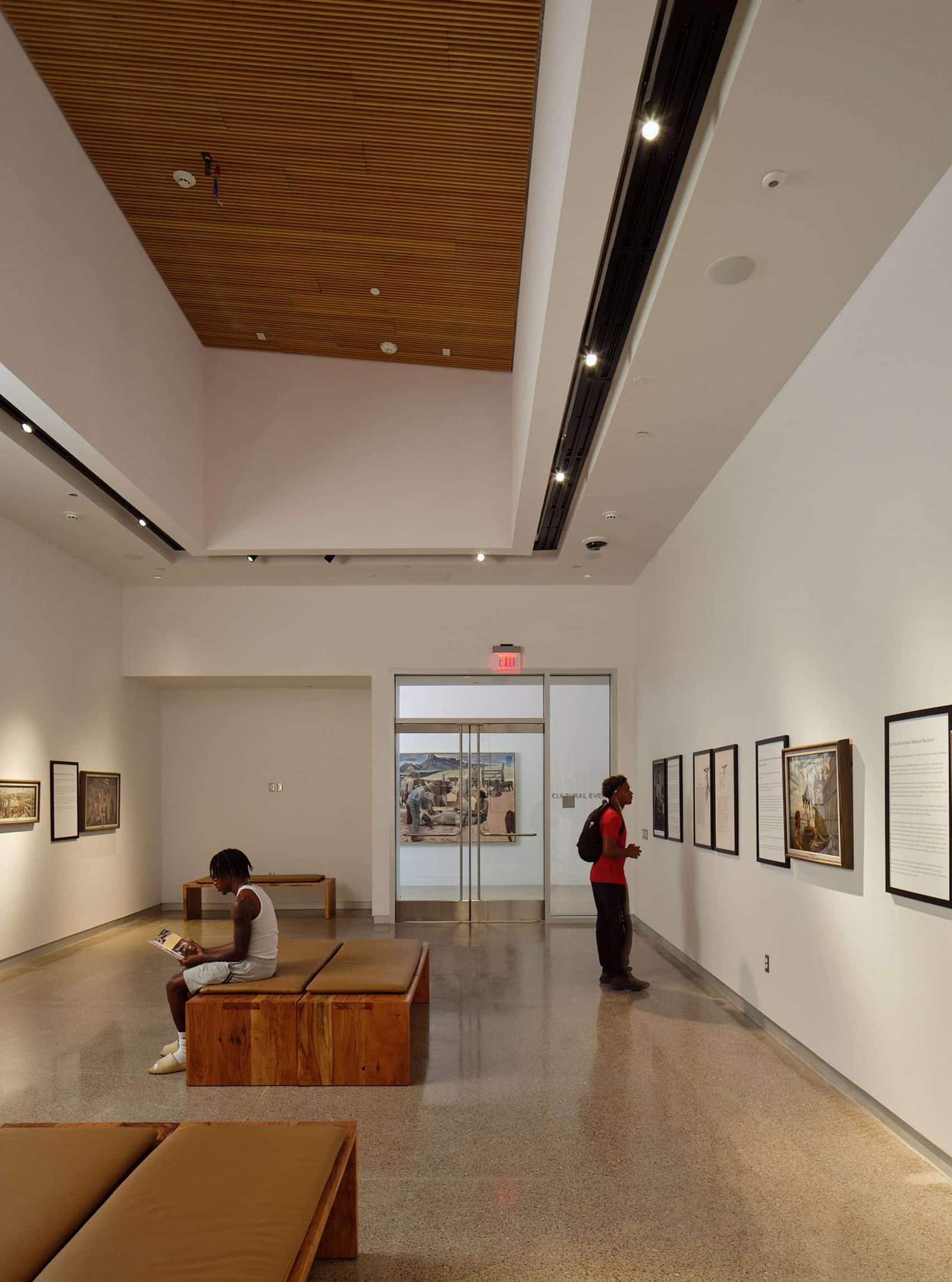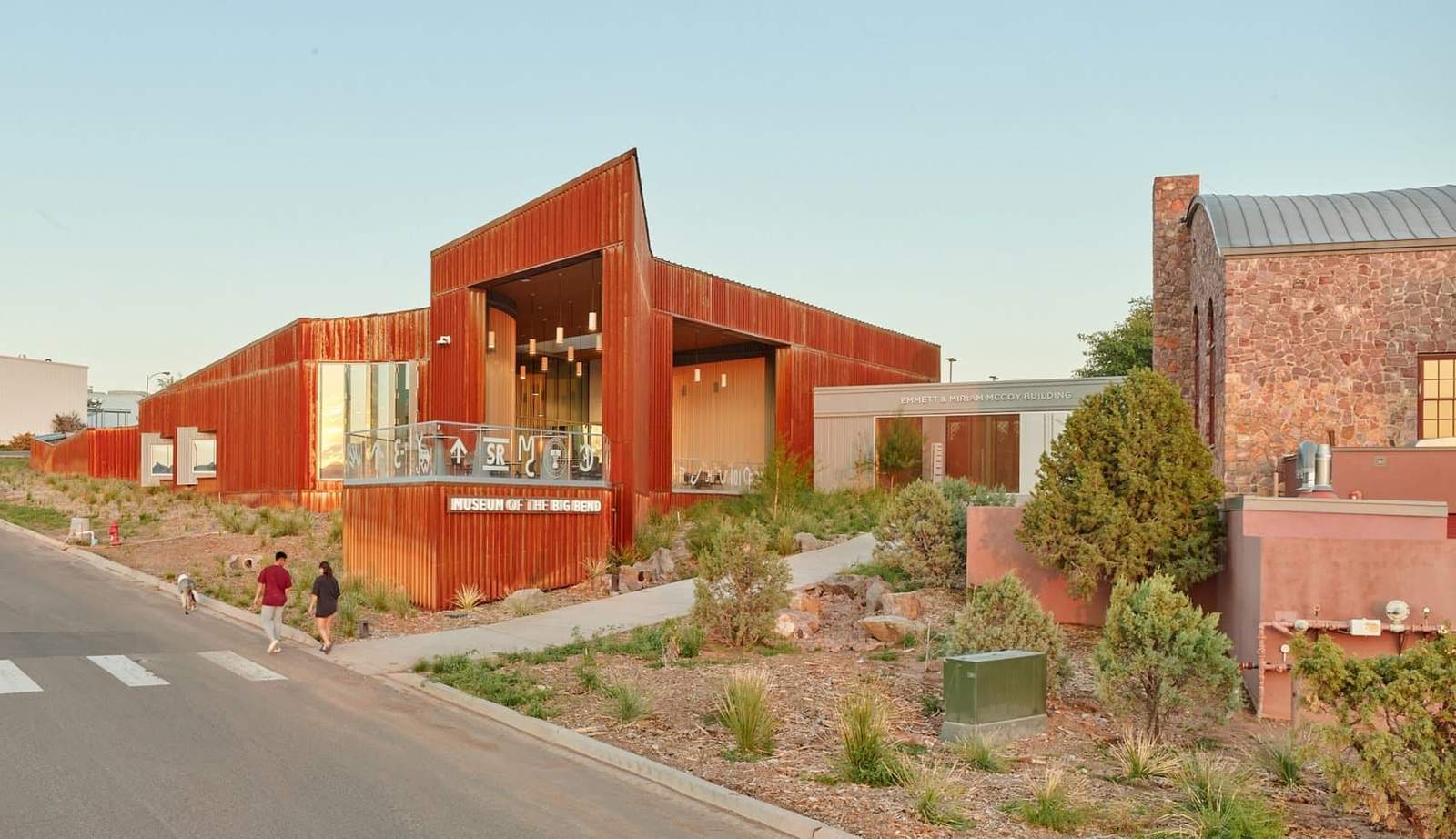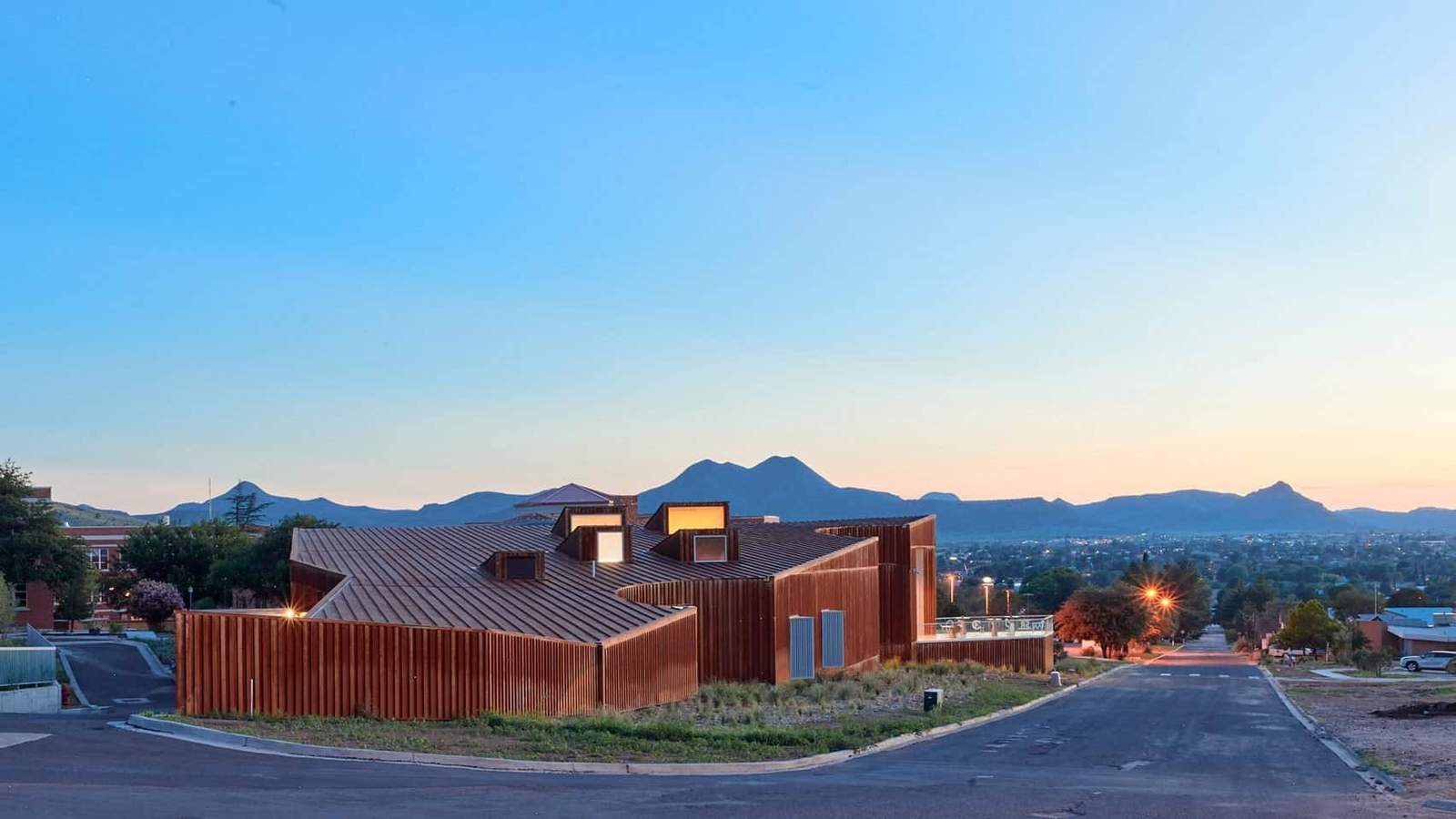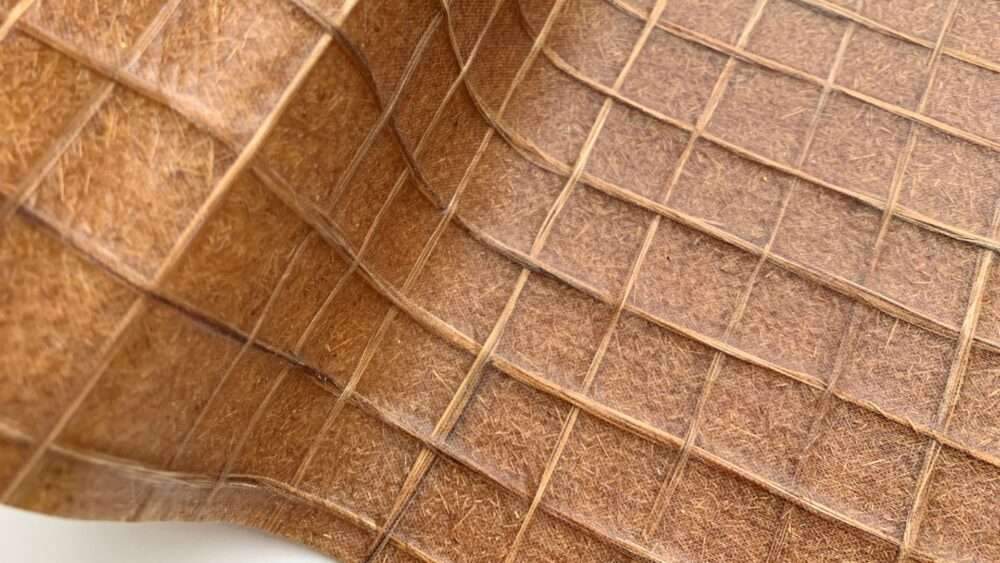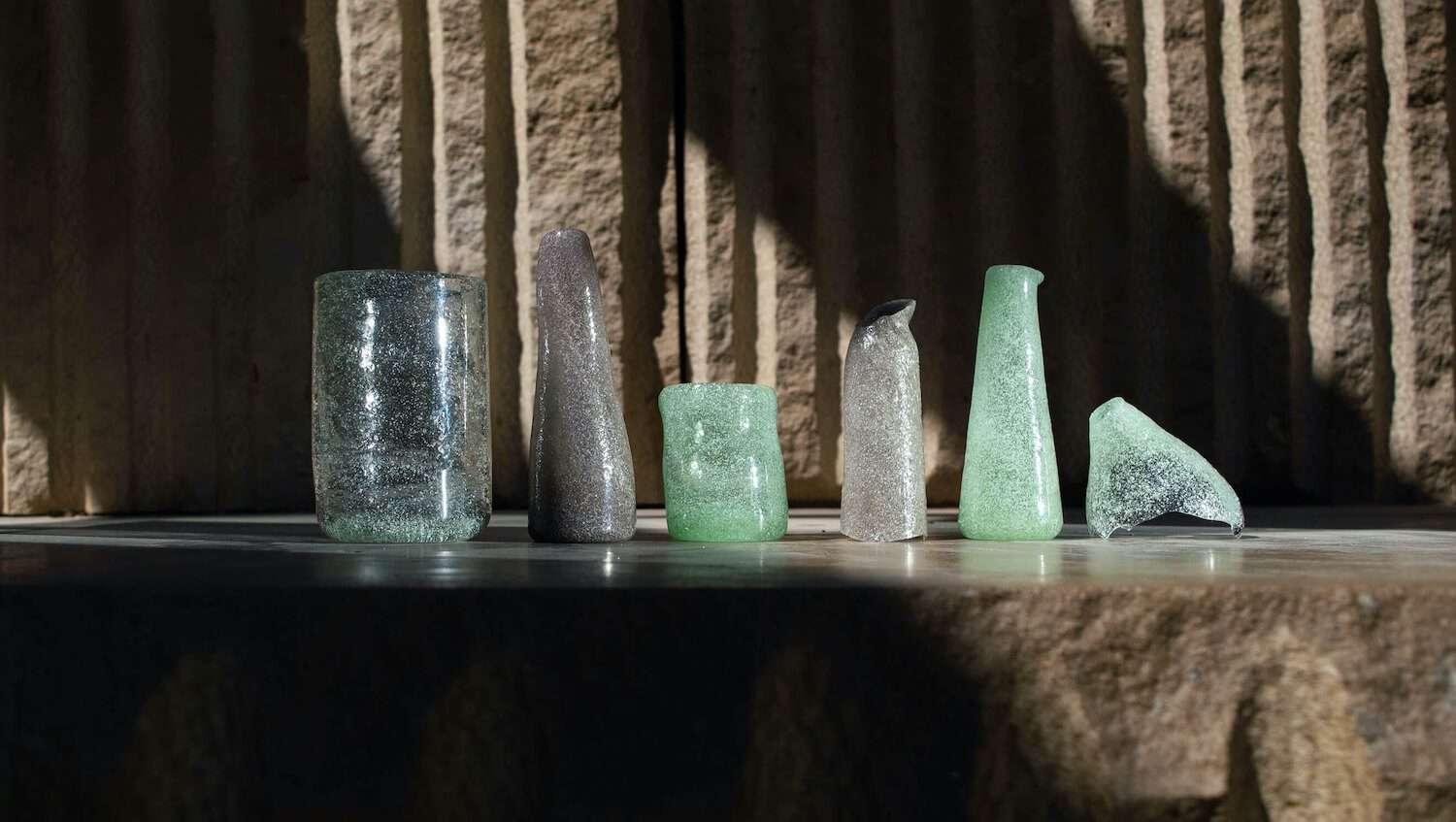In the heart of Texas, amidst the rugged beauty of the Trans-Pecos mountain range, lies the town of Alpine, home to the Museum of the Big Bend. Perched atop an elevated site, the museum serves as a cultural oasis, celebrating the rich heritage of the American West. Recently, a new chapter in the museum’s story unfolded with the completion of a striking Corten steel addition, a testament to the seamless integration of contemporary design with historical context.
A Cultural Icon Reimagined
The Museum of the Big Bend, with its original 1930s stone structure, has long been a beacon of culture in West Texas. Situated against the backdrop of vast, untamed wilderness, the museum stands as a testament to the resilience and pioneering spirit of the region’s inhabitants. However, as the museum sought to expand its offerings and accommodate a new collection of artworks, the need for additional space became apparent.
Embracing the Landscape
The decision to embark on an expansion project presented architects with a unique challenge: how to honor the museum’s rich history while embracing the rugged beauty of its surroundings. The answer lay in the careful selection of materials and a thoughtful approach to design. Corten steel, renowned for its durability and weathering properties, emerged as the material of choice, offering a striking contrast to the natural stone of the original building while harmonizing with the earthy tones of the West Texas landscape.
Blurring Boundaries
The Corten steel addition, meticulously crafted by the renowned architectural firm Page Southerland Page, is a testament to the marriage of form and function. Its angular silhouette, punctuated by semi-circular cutouts and expansive windows, serves not only as a nod to the surrounding mountains but also as a bridge between the interior and exterior worlds. As visitors step inside, they are greeted by panoramic views of the rugged terrain, blurring the boundaries between art and nature.
A Symphony of Light and Space
Central to the design of the addition is the interplay of light and space. The architects, cognizant of the museum’s role as a custodian of culture, sought to create a space that not only showcases art but also serves as a canvas in its own right. North-oriented light wells flood the interior with natural light, casting a warm, inviting glow upon the gallery spaces and event areas. The result is a symphony of light and space, where art and architecture converge to create an immersive sensory experience.
Bridging Past and Present
As visitors meander through the museum’s new addition, they are invited on a journey through time, where the past seamlessly merges with the present. The Corten steel structure, with its weathered facade and modernist design, stands as a testament to the enduring spirit of the American West. Yet, it is also a symbol of innovation and progress, a bridge between the museum’s storied past and its promising future.
Community Engagement and Collective Spirit
Perhaps most remarkable of all is the manner in which the museum’s expansion came to fruition. Funded through grassroots efforts and local donations, the project embodies the collective spirit of the community. It is a testament to the town’s commitment to preserving its cultural heritage and fostering artistic expression. As visitors from near and far marvel at the museum’s new addition, they are not only witnessing a triumph of architecture but also a celebration of community and culture.
Looking Ahead
As the sun sets over the rugged peaks of the Trans-Pecos mountains, the Museum of the Big Bend stands as a beacon of hope and inspiration. Its Corten steel addition, with its bold design and timeless elegance, serves as a reminder of the transformative power of architecture. As the museum continues to evolve and grow, it will undoubtedly remain a cherished cultural icon, weaving together the threads of the past, present, and future in a tapestry of art and imagination.
In conclusion, the Museum of the Big Bend’s Corten steel addition is more than just a building; it is a testament to the enduring spirit of the American West and a testament to the transformative power of architecture. As visitors wander through its halls, they are not only witnessing history but also shaping the future, one brushstroke at a time.
Finally, find out more on ArchUp:




